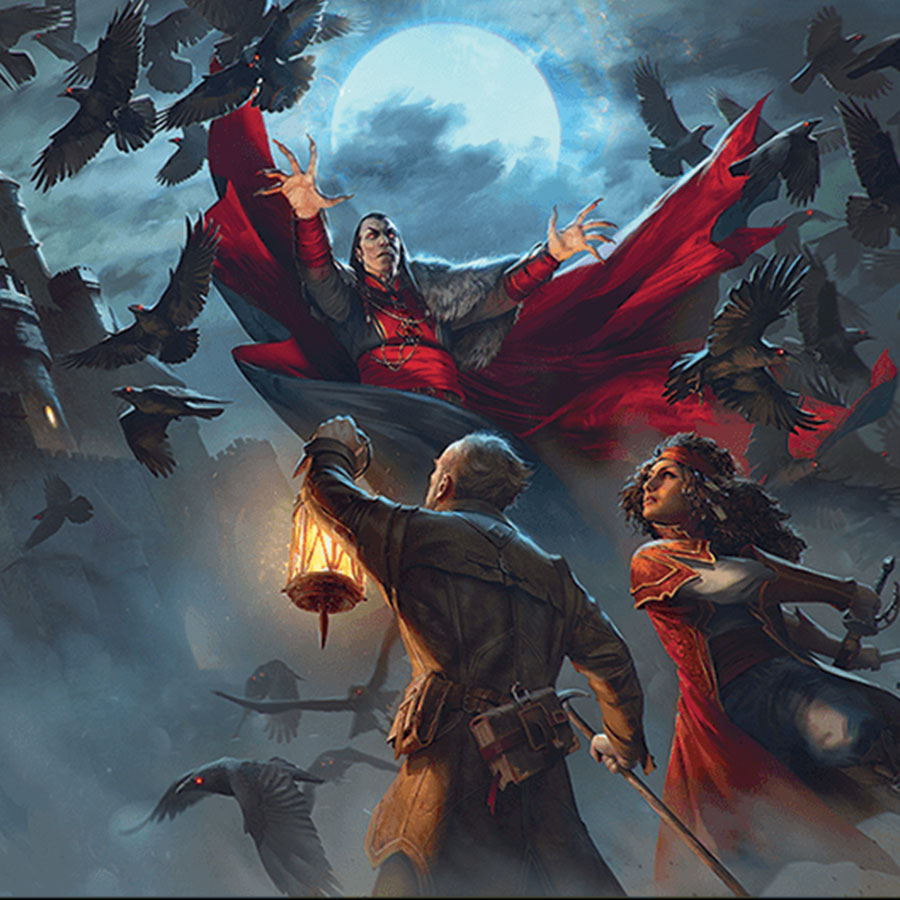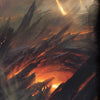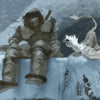The SUPREME Worldbuilding Method for TTRPGs

Written by Luke Hart
Is Your World Alive? Indulge me for a moment, if you will. Close your eyes and think of the town in which you grew up. What images come to mind when you think about home? What things would you want someone visiting for the first time to experience? In addition to the things you can see, sounds, smells, tastes, and special places all combine to make that place real to you.
Now think about your D&D world – where you run your games – where you and your friends’ imaginations live for 4 to 6 hours a week, or longer. Is your game world just as alive to you as the town you grew up in?
If you’re like most game masters and players, it probably isn’t, and that’s okay. The worlds that we run our games in will likely never approach the level of reality as the – well, real world. That’s just life. However, there are certainly things we, as dungeon masters, can do to breathe MORE life into our worlds and to make them come MORE alive to not just our players, but also to ourselves.
So, today we’re going to deep dive into a worldbuilding methodology called SUPREME. It’s an acronym that standards for Social Structures, Underworld Influence, Political Activities, Religious Experiences, Economic Impacts, Military Actions, and Environmental Factors. These are all things you should strongly consider fleshing out in your world.
These 7 pillars of worldbuilding have the potential to make your world come alive if you implement them properly. So, first we’re going discuss each of these pillars, and then we’ll talk about implementation.
Watch or listen to this article by clicking the video below.
#1 Social Structures
Wherever there are people, there are social constructs, expectations, trends, and taboos. Social structures reflect how a society operates and evolves over time. This could range from government systems to more transient social events, such as fads, festivals, and fashion trends. Social structures create a dynamic backdrop that can add layers of depth to your world.
Examples to consider:
- Popular fads or new fashions taking the city by storm.
- Food trends that locals rave about.
- Festivals, balls, and parties where social interaction is on full display.
How does this affect adventuring? While these events might not directly impact an adventuring party’s quest, they provide a snapshot of a living world. The characters can participate in these social events, interact with NPCs, and even see how their actions might influence or disrupt these structures. It’s a subtle yet powerful way to show the world is evolving beyond the party's influence.
#2 Underworld Influence
From the fads of high society, we descend into the shadows of the underworld. The underworld could involve anything from a national thieves’ guild to local bandits or a lone cutpurse. Organized crime doesn’t need to be a massive network like in Waterdeep, but it often becomes a force that influences the world in significant ways.
Things to consider:
- Does your game feature an organized thieves’ guild, a scattered group of criminals, or something in between?
- How does the underworld interact with the city’s authorities? Are they in bed together, at war, or something in between?
The relationship between crime and authority can shape the atmosphere of your game and provide intriguing opportunities for your players. Maybe the city guard looks the other way when certain criminals operate, or perhaps the PCs find themselves caught in the middle of a turf war.
#3 Political Activities
Politics play a pivotal role in shaping a living world. Political shifts, changes in leadership, or even war can have a massive impact on the world the adventurers inhabit. The rise and fall of nations, new laws, revolutions, and shifting alliances all create a backdrop that can affect the adventurers’ day-to-day lives and opportunities.
Things to consider:
- Changes in leadership (like a new lord-mayor taking over).
- New laws or taxes that impact the city.
- Larger events such as war or revolution.
Adventurers may not want to dive deep into politics, but they will undoubtedly be affected by these changes. Perhaps they lose access to a valuable patron when a new leader takes power, or they find themselves caught in a civil uprising. Political activities can shape quests and challenges that add intrigue to your game.
#4 Religious Experiences
Religions are often at the heart of a society, influencing everything from daily routines to grand political movements. The introduction of new religious beliefs, the death of a key religious figure, or even religious festivals can all shape the world in meaningful ways. Religious fervor can motivate anything from peaceful gatherings to full-scale holy wars.
Things to consider:
- How does religion influence holidays, rituals, and festivals in your world?
- What happens when an influential religious figure dies or retires? Does this lead to a shift in church doctrine, or even a complete reform?
Religion adds yet another layer of dynamic interaction to your world. Adventurers may attend holy festivals or be swept up in religious conflict. Their actions may even spark new religious movements, for better or worse.
#5 Economic Impacts
Few things impact a society more than the flow of wealth. Whether it's a new “must-have” item at the local market, the rise of a guild, or a natural disaster affecting trade, economics shape the daily lives of your world’s inhabitants. A sudden influx of wealth—or a steep decline—can cause societies to flourish or fall apart.
Things to consider:
- Droughts affecting farming communities, floods impacting trade routes, or new technologies shifting entire industries.
- How do these economic changes affect not just the common folk but the adventurers too?
Economics tie the world together and can provide hooks for new quests or challenges. A drought might create tension between communities over scarce resources, while the invention of new technologies could revolutionize trade and warfare.
#6 Military Actions
War is one of the most dramatic and far-reaching events in any world. Whether it’s a local skirmish or a continent-spanning conflict, war touches everything from politics and economics to social structures and religion. Military action creates stories, shapes heroes, and leaves devastation in its wake.
Things to consider:
- How does war affect the local economy and population?
- Are your characters hearing about a war far away, or are they directly involved in it?
Even if the war isn’t local, the ripple effects can reach the adventurers. Soldiers may return home wounded, refugees may flood into cities, and mercenaries may rise in power. War can become a backdrop that shapes the tone of your campaign.
#7 Environmental Factors
Finally, let’s talk about nature. While every other pillar involves the actions of people, environmental factors remind us that the world is much larger than its inhabitants. Natural disasters, climate shifts, and extreme weather can all leave lasting effects on the world.
Things to consider:
- How do natural disasters, like floods, wildfires, or earthquakes, shape your world?
- What actions do the people take to respond to these events?
Environmental changes can add drama and urgency to your campaign. Characters may need to contend with a hurricane as they embark on a journey, or they may return from an adventure to find a tsunami has devastated the city they call home.
Implementing SUPREME at the Table
It’s one thing to worldbuild, but it’s another to bring those details into your game in a way that your players experience firsthand. SUPREME worldbuilding isn’t about filling your notes with endless details—it’s about making sure these elements come to life in play.
Here’s how to do it:
- Hearing about it: Characters might overhear tavern conversations about protests or new laws. Perhaps they return to the city to find it in the middle of rebuilding after a natural disaster.
- Directly experiencing it: Take it a step further by having your characters interact with these elements firsthand. For example, they could find themselves in the middle of a riot sparked by political unrest, or they might need to evacuate a city as a tsunami approaches.
By showing how the world changes and grows beyond the adventurers’ actions, you create a living, breathing world that feels dynamic and real.
100 Years of GM Experience at Your Fingertips!
Are you a NEW GAME MASTER feeling a bit overwhelmed by everything involved with running a role-playing game? Are you a VETERAN GAME MASTER looking for new tips and tricks to take your games to the next level? Look no further than the Secret Art of Game Mastery.
We at the DM Lair have distilled our CENTURY of accumulated GM experience into an easy-to-read guide of practical advice that you can immediately apply to your games! We've even included our own templates–the things that we use to prepare our ACTUAL games.
Get all three books to master your game:
- The Secret Art of Game Mastery. Contains over 100 years of GM advice distilled into an easy-to-read format. It introduces and explains the tools of the trade, scheduling, playstyle, post-game notes, getting player feedback, and more.
- The Secret Art of Preparation. Brings to your fingertips the actual templates and guides that the DM Lair team uses to prepare games, Lair Magazine, and more. Designed as a three-ring binder, it's intended for you to write directly into for your entire campaign!
- The Secret Art of Notetaking. Gives you the keys to tracking your campaign from session to session just like the DM Lair team. Designed as a three-ring binder, it's intended for you to write in and keep track of your whole campaign!
With so much knowledge and experience on its pages, The Secret Art of Game Mastery is guaranteed to become an indispensable tool for all game masters, new and veteran alike. And if that isn’t enough, the information applies to all game systems and all genres!
-
Posted in
Game Master How-To Articles







